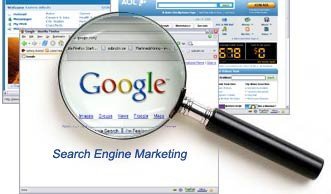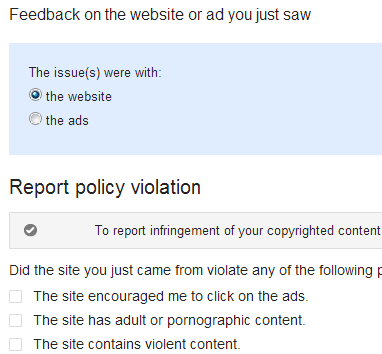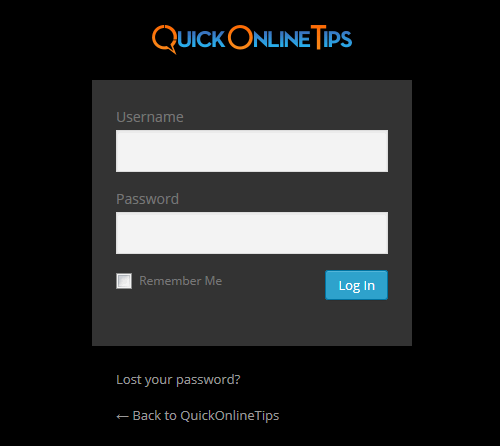Within this article, I will reveal to you the steps to getting your new website indexed quickly. With massive amounts of new websites pouring into the internet on a daily basis, it is absolutely crucial that you as a webmaster invest time into getting your website indexed.
For many people, getting search engine spiders to crawl their content for the first time is one of the toughest things to do. And even tougher still is the task of getting those spiders to come back and crawl your content on a regular basis. But alas, it is possible to get your brand new website crawled, indexed and visited frequently by search engine spiders – you just have to know the right tricks!

This is completely possible for even the novice webmaster who knows nothing about how websites work. The reason why I can say this is because I was a complete novice as well, but I managed to get my website crawled and indexed within the first 48 hours of it being on the web.
I want to share with you exactly what I went through in order to get my website crawled and indexed so quickly, and hopefully you will find it helpful, insightful, beneficial and inspirational. Without further adieu, let's get into the nitty gritty of getting your new website indexed quickly.
1. Plan, research, plan, research some more!
So you want to get your website indexed within 48 hours too, right? The most important thing I can tell you to do before you even think about publishing your website is to plan and do research. I will expound on some of these topics later in the post.
- Map out what your site will look like – literally draw out a rough sketch of your website. Design each page to your liking on paper, and then transfer that into building your website on the web. This will drastically reduce the amount of time you spend on hunting for a predesigned template or building your own template from scratch.
- Brush up on your SEO (search engine optimization) knowledge and gain a general understanding of how it works. Write down any useful information and keep it handy for when you go to publish your website.
- Scope out your competition and see how their website flows. While you do not want to copy work from your competition, you do want to learn from them so that you can avoid future mistakes.
- Research what you can do in order to promote your website quickly. For example, reading this article is an excellent place to start! Simple Google searches like "how to get your website indexed", "how to get traffic to your website" and "how to promote your website" will bring up plenty of content for you to digest.
2. Create at least 10 pieces of quality content ready
I made sure that I had already written, proofread and edited my website content before I purchased my domain name and hosting. Because I had already mapped out the niche I wanted to enter, I prepared quality content that would be ready for publishing as soon as my website went live. This allowed me to gear up my website quickly and focus on designing the website rather than having to rush around to write "quality" content.
3. Start building your internal link structure
I think this is a crucial mistake that far too many new webmasters commit. They research on how to get their website indexed quickly, how to promote their website, and how to get traffic to their website, but they forget to actually develop their website. Indexing, promotion and traffic are all wonderful bonuses, but the quality of your website must always be of first importance.
Depending on your website (you may own an informational website, a blog or a combination of both), create the necessary web pages that are needed for the site. For example, I created these pages right from the beginning: "Home", "Blog", "Articles", "Misc", "Contact" and "About". It is beneficial if you have already prepared the staple information (Contact, About, etc.) so that you can just toss the information in as soon as you publish your website.
Once you have created and edited your pages, begin the process of adding in your prewritten content and linking the pages to one another. Make sure that every page links to at least one other page in your website and that each individual page has at least one link pointing to it. This is vital for helping those spiders crawl and index the majority of the pages in your website. Make it easy on the spiders by thoroughly linking to your web pages. Make sure that your link structure flows logically – a.k.a., don't just randomly add links into your web pages. Make sure that each link is a cohesive fit and that each link will make surfing for your visitors (and the spiders) easier.
4. Optimize your content for niche keywords
Looking back at when I first started my website, I wish I would've researched more about how to optimize web pages. Use the Google Keyword Tool to analyze what people are searching for in your niche. Once you have found a few phrases that you think fit your website's content, start optimizing your pages by strategically placing those keywords throughout your content.
Don't overstuff your content with those keywords or the spiders will think your website is a bunch of spam. However, make sure you use those phrases (and variations of those phrases) enough to attract attention from the search engines. If it flows well, also make your anchor text (the text that appears for a hyperlink) mimic the keyword(s) highlight the keyword phrases you have chosen. This will help those search engine spiders understand what your content is all about and tell them how to rank it in the respective search engines.
5. Submit to search engines and web directories
This is the point in which you will start receiving some attention from the web spiders. I first started out by submitting my website to the big search engines: Google and Bing. To make things easier on you, each of those terms is hyperlinked to the page that you need to access in order to submit your site to those search engines. Submit your main URL to each of these search engines to get started.
The next thing I would suggest that you do is sign up for Google Webmaster Tools. Once again, it is highlighted for your convenience (please note that you must create a Google account first before you can use their tools). I would also sign up for Bing Webmaster Tools (you must create a Hotmail account) while you are at it. Bing does take longer to index pages than Google, but it would be wise to go ahead and sign up for their tools anyways. Yahoo! also has their own type of webmaster tools for you to use.
After you have submitted your URL to the search engines and have signed up the for Webmaster tools, it is time to create a sitemap for your website. This allows the search engines to see and understand the link structure in your website and, more importantly, allows the spiders to crawl your website with more freedom and ease. You can easily create your own sitemap and filling out the necessary information.
Now that you have done all that work (phew!), it is time to start submitting your website to some web directories. I will go ahead and warn you that there are myriads of directories out on the web, but not all of them are necessarily good. Below is a list of directories (both paid and free) that I would recommend for submitting your website.
Paid Directories
- InCrawler.com – they have a good directory that is not cluttered. It is a PR5 directory with a basic fee of $25. You may also choose to pay $50 for a premium listing if you so desire.
- JoeAnt.com – they have a wonderful directory that truly can bring traffic to your website. It is a PR6 directory with a onetime, non-refundable fee of $40. The only downside to this is that you are not guaranteed acceptance into the directory. If you are not accepted, you can always apply for an editor position and submit your website from there.
- BOTW.org – this is a huge directory that has clout with Google. It is a PR7 directory with two, non-refundable options: a $100/yr recurring fee or a onetime submission fee of $300. You are not guaranteed inclusion in the directory, so I would be cautious to submitting your site to this directory right off the bat.
Free Directories
- DMOZ.org – just submit your site to this PR8 directory anyways. The backlog is insane, so don't expect to get your site included anytime soon. However, I would go ahead and recommend that you submit your site to them. It has a lot of presence with Google (Google basically copies their directory).
- Tsection.com – this PR5 directory is excellent for free submission. It is laid out well and provides a good backlink for your website.
- LinkCentre.com– this PR3 directory is nice and they accept your site very quickly. The only drawback to this directory is that it is very full because of the automatic approval factor.
- SoMuch.com – this nice PR5 directory will review your site quickly for inclusion.
7. Submit content to social media sites
Now that you have setup your website and submitted it to search engines and web directories, it is time to submit your content (that you have hopefully already created) to some social media sites. I would recommend that you submit your content to the following sites (as they get indexed quickly and/or produce large volumes of traffic): Digg, Reddit and StumbleUpon. While there are other social media websites (feel free to submit your content to them too), I would first start out with these three.
Digg is crawled very frequently by search engine spiders, so you have an excellent chance of getting your content crawled once it is submitted. I have found that Reddit can bring good traffic to your website and that Reddit users tend to tweet about their newest findings (good advertising). StumbleUpon has the potential to bring tons of traffic to your website in a short amount of time, greatly increasing the chance that your site will get indexed quickly by the search engines.
8. Sit back, and watch your site get indexed
While I cannot 100% guarantee that this method of getting your website indexed quickly will work, I can say from personal experience that doing this got my own website indexed within 48 hours. And, because I took the time up front to do all this labor, my blog posts generally get crawled and indexed within 5 hours of me publishing them on the internet. Did I mention that I have only been at this whole website thing for 2 months? Many people can't even get their website indexed in two months, much less their newest content!
Using these steps above, I got my own website/blog indexed within 48 hours. Two months later, my website gets crawled at the very least every other day (if I don't make any new posts) and it is always crawled the same day I make a new post. Remember folks, I've only been at this for two months. Take time to follow the steps that I have provided for you, and you will start to see results in no time!



















0 comments:
Post a Comment